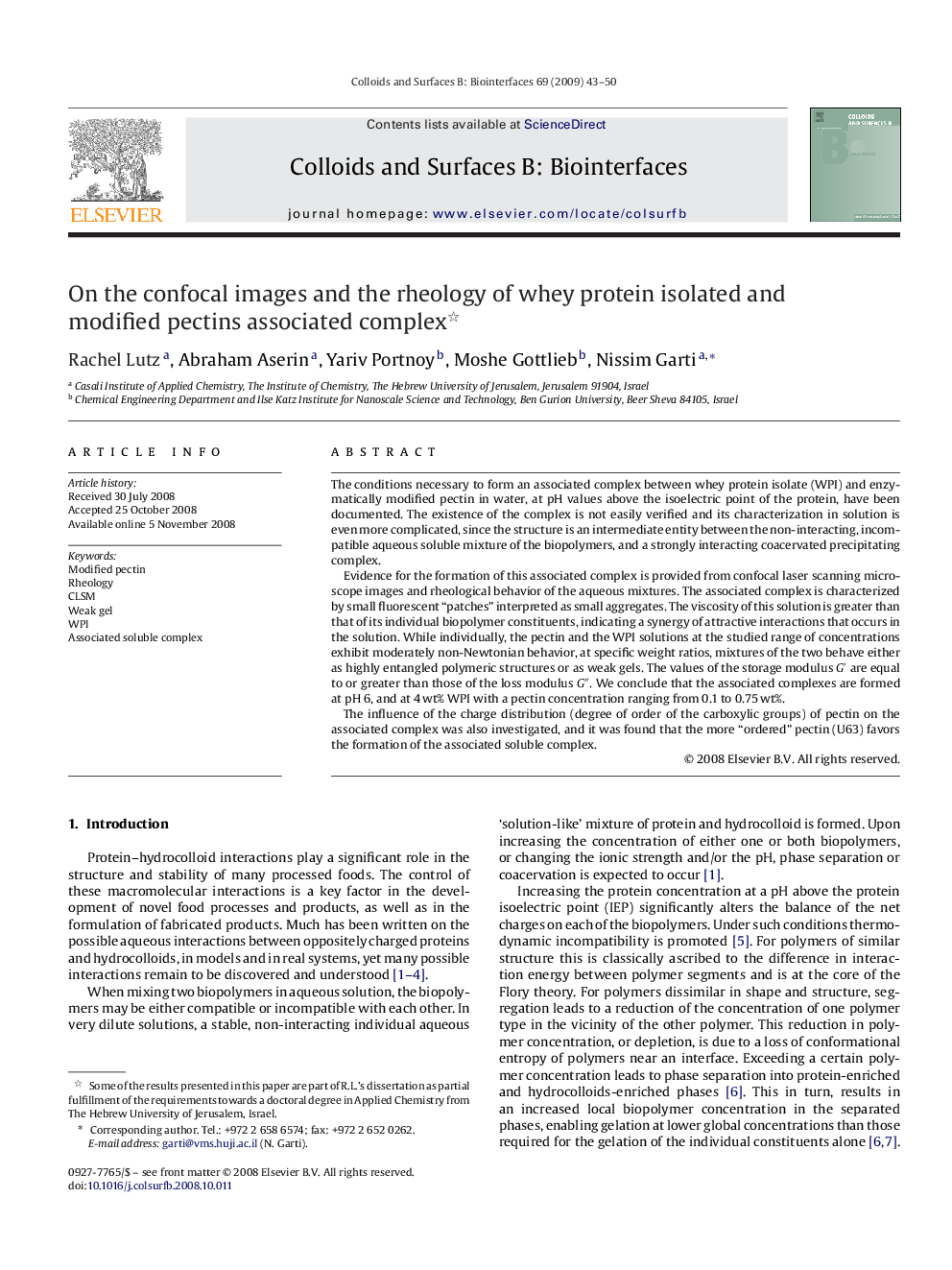| Article ID | Journal | Published Year | Pages | File Type |
|---|---|---|---|---|
| 601890 | Colloids and Surfaces B: Biointerfaces | 2009 | 8 Pages |
The conditions necessary to form an associated complex between whey protein isolate (WPI) and enzymatically modified pectin in water, at pH values above the isoelectric point of the protein, have been documented. The existence of the complex is not easily verified and its characterization in solution is even more complicated, since the structure is an intermediate entity between the non-interacting, incompatible aqueous soluble mixture of the biopolymers, and a strongly interacting coacervated precipitating complex.Evidence for the formation of this associated complex is provided from confocal laser scanning microscope images and rheological behavior of the aqueous mixtures. The associated complex is characterized by small fluorescent “patches” interpreted as small aggregates. The viscosity of this solution is greater than that of its individual biopolymer constituents, indicating a synergy of attractive interactions that occurs in the solution. While individually, the pectin and the WPI solutions at the studied range of concentrations exhibit moderately non-Newtonian behavior, at specific weight ratios, mixtures of the two behave either as highly entangled polymeric structures or as weak gels. The values of the storage modulus G′ are equal to or greater than those of the loss modulus G″. We conclude that the associated complexes are formed at pH 6, and at 4 wt% WPI with a pectin concentration ranging from 0.1 to 0.75 wt%.The influence of the charge distribution (degree of order of the carboxylic groups) of pectin on the associated complex was also investigated, and it was found that the more “ordered” pectin (U63) favors the formation of the associated soluble complex.
